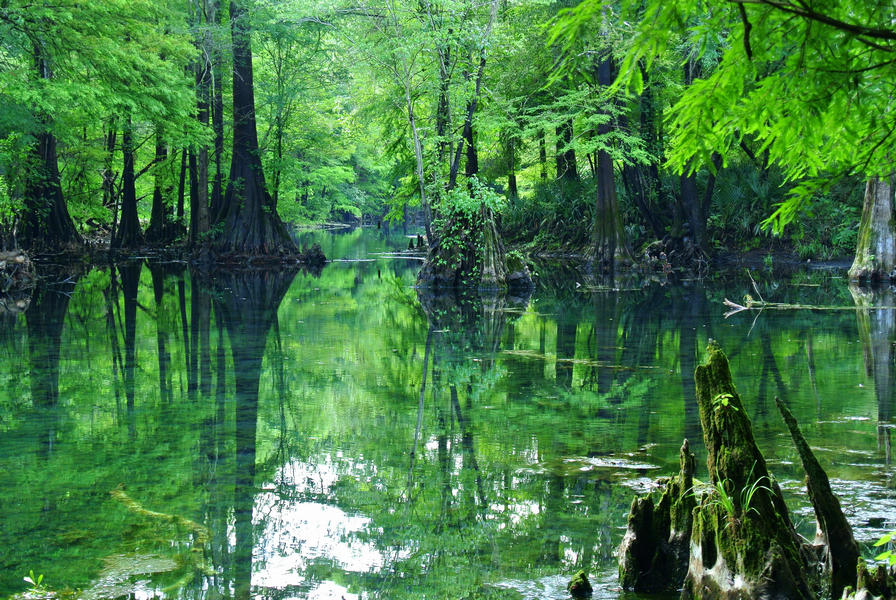Water Supply – Florida Department of Environmental Protection

DWRA’s Alternative Water Supply and Restoration Program
DWRA’s Alternative Water Supply and Restoration Program is responsible for managing Alternative Water Supply (AWS) projects that are selected by DEP’s Office of Water Policy and Ecosystems Restoration; and developing and managing grant agreements resulting from line item appropriations (legislative appropriations) in each year’s Florida General Appropriations Act (GAA).
Alternative Water Supply Projects
The Alternative Water Supply and Restoration Program manages Alternative Water Supply (AWS) projects that are selected by DEP’s Office of Water Policy and Ecosystems Restoration. Funding is appropriated for the AWS Grant Program to help communities plan for and implement reclaimed water, aquifer recharge, water conservation and other AWS projects.
Local cooperators interested in funding for AWS projects need to first work with their local Water Management District (District) to develop a proposal. Projects approved at the District are then submitted to DEP for funding consideration. To assist Districts and local cooperators, DEP has developed the Alternative Water Supply Funding Guidance document and the Water Management District AWS Project Submittal Worksheet. These documents outline the funding process, the eligibility requirements, the submittal process and the evaluation criteria.
Legislative Appropriation Projects
The Alternative Water Supply and Restoration Program also develops and manages grant agreements resulting from line item appropriations (legislative appropriations) in each year’s Florida General Appropriations Act (GAA).
Each year, the Florida Legislature may solicit applications (from governmental entities) directly for “Community Budget Issue Request” projects, including water projects, in anticipation of upcoming legislative sessions. This process is an opportunity to secure legislative sponsorship of project funding through the state budget. Members of the public can contact their local legislative delegation to determine whether there are opportunities available to fund projects in a specific area. Information on contacting Senators and Representatives is available at http://www.leg.state.fl.us/Welcome/.
Contacts
Deinna Dalton, Program Administrator
Marjory Stoneman Douglas Building, 8th Floor3900 Commonwealth Blvd., MS 3602
Tallahassee, FL 32399
| Name | Position | Phone Number |
|---|---|---|
| Deinna Dalton | Program Administrator | 850-245-2230 |
| David Taylor | Environmental Administrator, Legislative Appropriations Projects | 850-245-2907 |
| Patricia Gedeo | Environmental Specialist II, Legislative Appropriation Projects | 850-245-2938 |
| Charity Hudson | Environmental Specialist II, Legislative Appropriation Projects | 850-245-3192 |
| Ashton Lewis | Environmental Specialist III, Legislative Appropriation Projects | 850-245-2839 |
| Diana Llerena | Environmental Specialist I, Legislative Appropriation Projects | 850-245-2841 |
| Noel Robinson | Environmental Specialist III, Legislative Appropriation Projects | 850-245-2071 |
| Tolulola Adeyewa | Environmental Specialist III, Legislative Appropriation Projects | 850-245-2146 |
| Katie Verdesca | Environmental Administrator, Alternative Water Supply Projects | 850-245-3198 |
| Olivia Atkins | Environmental Specialist II, Alternative Water Supply Projects | 850-245-2904 |
| Ethan Richardson | Environmental Specialist III, Alternative Water Supply Projects | 850-245-3189 |
| Sarah Stage | Environmental Specialist III, Alternative Water Supply Projects | 850-245-2842 |
| Lydia Walker | Environmental Specialist III, Alternative Water Supply Projects | 850-245-2838 |
SDGs, Targets, and Indicators in the Article
1. Which SDGs are addressed or connected to the issues highlighted in the article?
- SDG 6: Clean Water and Sanitation
- SDG 11: Sustainable Cities and Communities
- SDG 13: Climate Action
2. What specific targets under those SDGs can be identified based on the article’s content?
- SDG 6.4: By 2030, substantially increase water-use efficiency across all sectors and ensure sustainable withdrawals and supply of freshwater to address water scarcity and substantially reduce the number of people suffering from water scarcity.
- SDG 11.5: By 2030, significantly reduce the number of deaths and the number of people affected and substantially decrease the direct economic losses relative to global gross domestic product caused by disasters, including water-related disasters, with a focus on protecting the poor and people in vulnerable situations.
- SDG 13.1: Strengthen resilience and adaptive capacity to climate-related hazards and natural disasters in all countries.
3. Are there any indicators mentioned or implied in the article that can be used to measure progress towards the identified targets?
- Indicator 6.4.1: Change in water-use efficiency over time.
- Indicator 11.5.1: Number of deaths, missing persons, and directly affected persons attributed to disasters per 100,000 population.
- Indicator 13.1.1: Number of deaths, missing persons, and directly affected persons attributed to disasters per 100,000 population.
Table: SDGs, Targets, and Indicators
| SDGs | Targets | Indicators |
|---|---|---|
| SDG 6: Clean Water and Sanitation | 6.4: By 2030, substantially increase water-use efficiency across all sectors and ensure sustainable withdrawals and supply of freshwater to address water scarcity and substantially reduce the number of people suffering from water scarcity. | Indicator 6.4.1: Change in water-use efficiency over time. |
| SDG 11: Sustainable Cities and Communities | 11.5: By 2030, significantly reduce the number of deaths and the number of people affected and substantially decrease the direct economic losses relative to global gross domestic product caused by disasters, including water-related disasters, with a focus on protecting the poor and people in vulnerable situations. | Indicator 11.5.1: Number of deaths, missing persons, and directly affected persons attributed to disasters per 100,000 population. |
| SDG 13: Climate Action | 13.1: Strengthen resilience and adaptive capacity to climate-related hazards and natural disasters in all countries. | Indicator 13.1.1: Number of deaths, missing persons, and directly affected persons attributed to disasters per 100,000 population. |
Source: floridadep.gov








